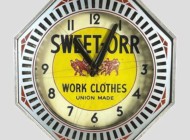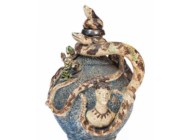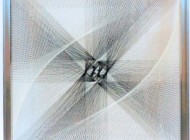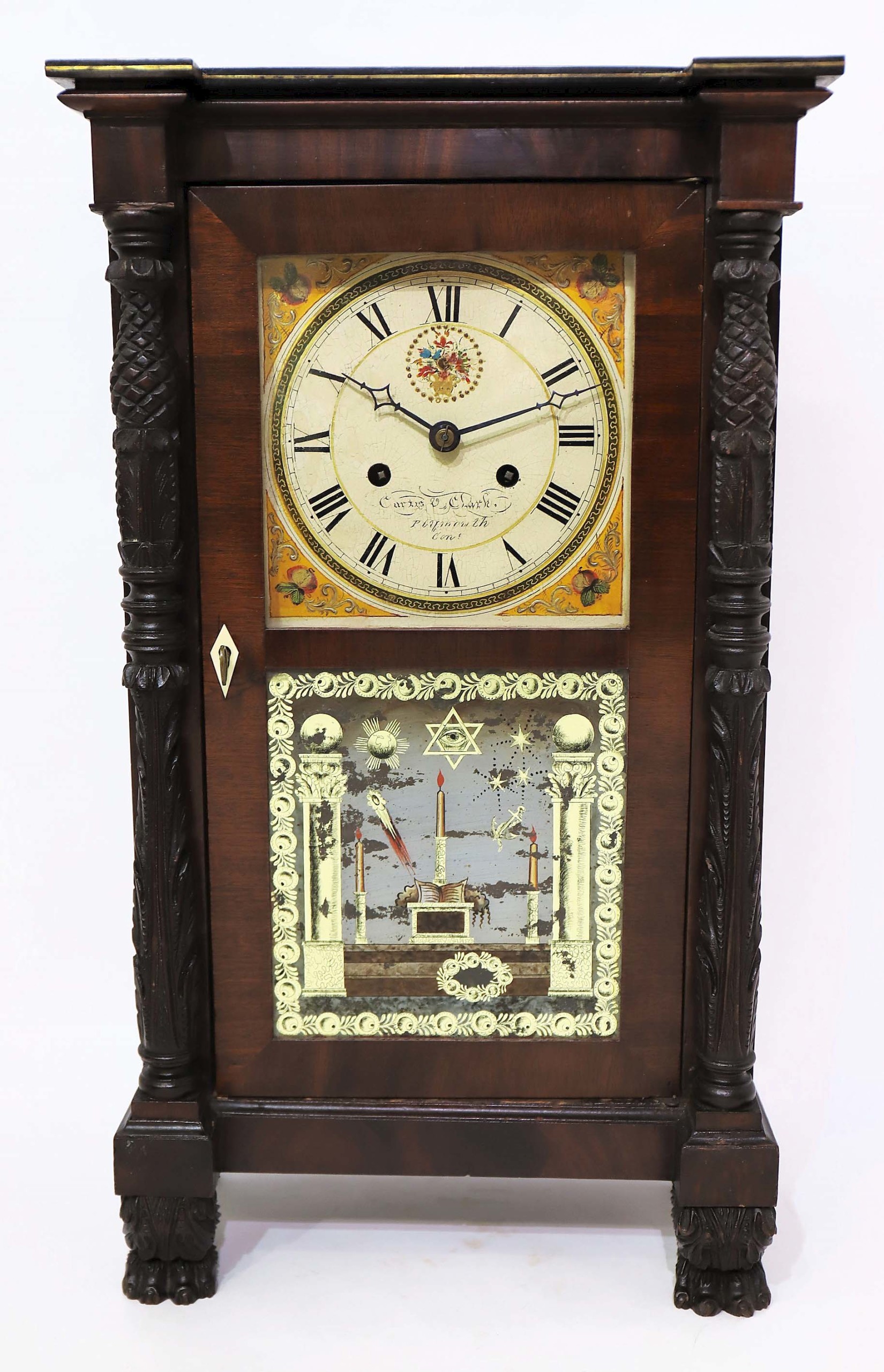
The top selling lot of the sale was this Curtis & Clark shelf clock with an eight-day movement. According to Todd Porter, “only 31 of these clocks are known to still exist from an initial production of an estimated 100 in 1824.” A bidder in Canada won the clock for $16,240 ($7,5/$15,000).
Review by Kiersten Busch
LEXINGTON, KY. — On July 31, Antique American Clocks conducted its July 2024 auction, offering a vast assortment of movement, shelf, porcelain, chime and weight and spring-driven clocks, as well as regulators, figurals, shelf calendars and novelties, among other items. The sale was an online-only, sealed bid auction, which totaled $118,000 with a sell-through rate of 78 percent. The total number of bidders amassed 136, with 91 of them taking home an item at the end of the sale.
After the auction, Antiques and The Arts Weekly caught up with Todd Porter, owner of Antique American Clocks, who reported, “These results are typical for this semi-annual auction; unsold clocks sell for the reserve price after the auction closes and offers below the reserve price are also considered. With post-auction sales, typically 90 to 95 percent of the clocks find new homes.”
Leading the sale was a Curtis & Clark miniature eight-day brass clock, made in 1824. Marked “29” in pencil on the seat-board and the top of its case, this clock is one of 31 known examples of the first brass, spring-driven, mass-produced shelf clocks models made in the United States. Signed “Curtis & Clark, Plymouth, Conn.,” the mahogany veneered clock had carved columns and a brass inlay in its cornice; it is also one of three known clocks that do not have a second hand, according to the auction catalog. Its rarity on all fronts encouraged bidders to push it to $16,240, clearing its $7,5/15,000 estimate and finding it a new home with a Canadian buyer.
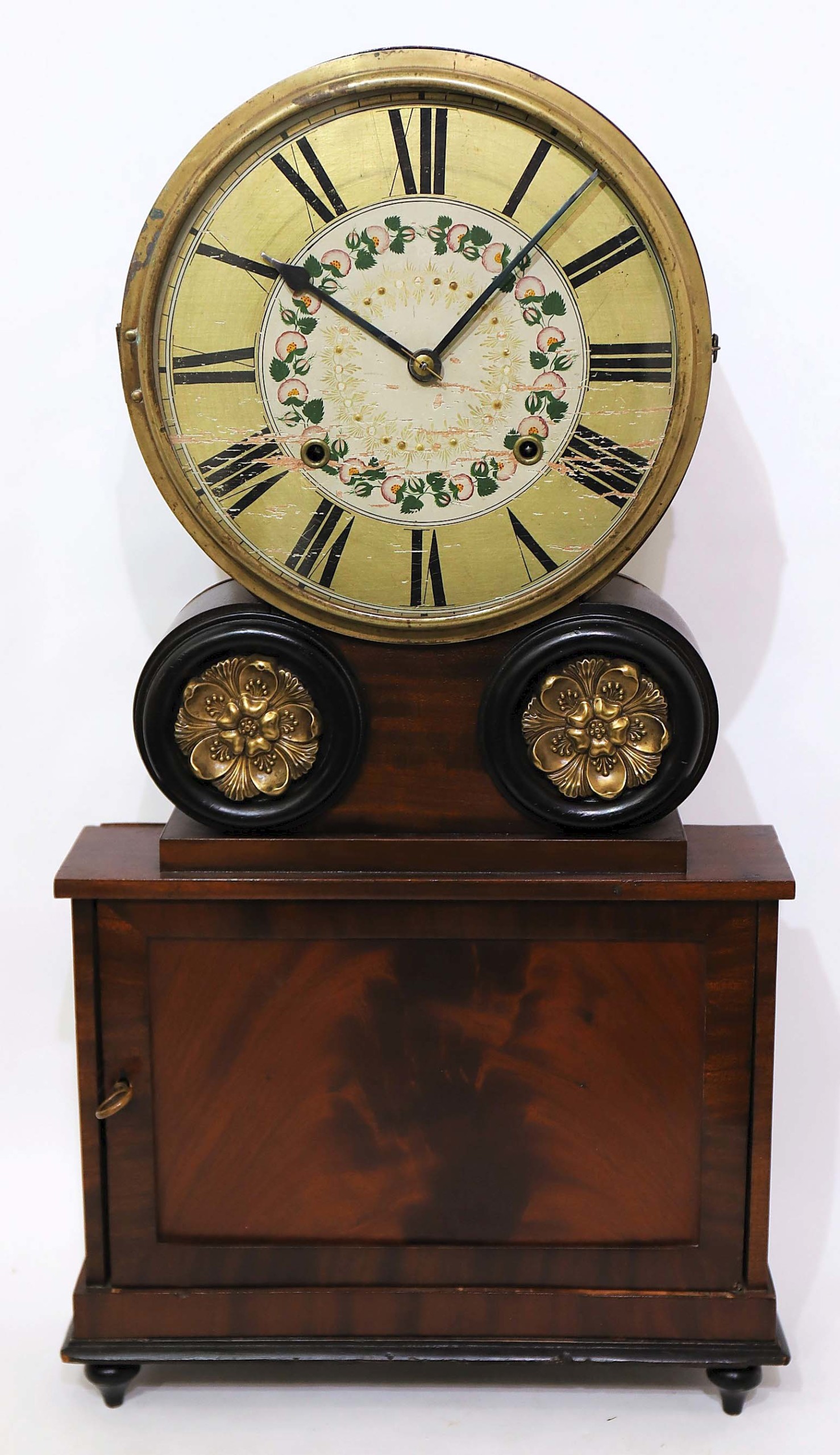
This 28¼-inch-tall Brooklyn shelf clock by Joseph Ives, circa 1829, with a “wagon spring”-powered brass movement, found a new home with a Washington state buyer for $5,657 ($4,5/5,500).
The second-highest price of the sale went to a circa 1829 Joseph Ives Brooklyn model shelf clock. Porter shared, “Ives was a key player in American clock manufacturing in the early 1800s, and this is a highly desirable clock.” This 28¼-inch-tall example had a “wagon spring”-powered brass movement and mahogany veneer. It was a later model of the initial multi-leaf spring-powered shelf clocks that Ives developed in New York in 1825 and 1830. The clock ticked to $5,657, heading to a buyer in Washington state.
“Further evidence of an international audience was shown by a rare clock that sold to a bidder in England,” said Porter, who was referring to a double-wind, 30-hour steeple clock, manufactured circa 1850 by Silas B. Terry, which went out for $3,920. According to the auction catalog, the clock wound in only one direction, but wound both the time and strike chains. Its 20-inch case was veneered with flame mahogany and it sported four cone finials and two original glasses.
A large Back Forest two-weight cuckoo, manufactured circa 1880, earned $1,434. The 30½-inch-tall case was carved into a forest scene; two large pheasants perched in front of two pines near the top of the clock, and leaves and mushrooms decorated the bottom, mimicking the forest floor. In the auction catalog, Porter added, “I have never seen mushrooms on a clock before!”
Antique American Clocks’ next sale will take place in January 2025.
Prices quoted include the buyer’s premium as reported by the auction house. For additional information, 859-312-9012 or www.antiqueamericanclocks.com.









